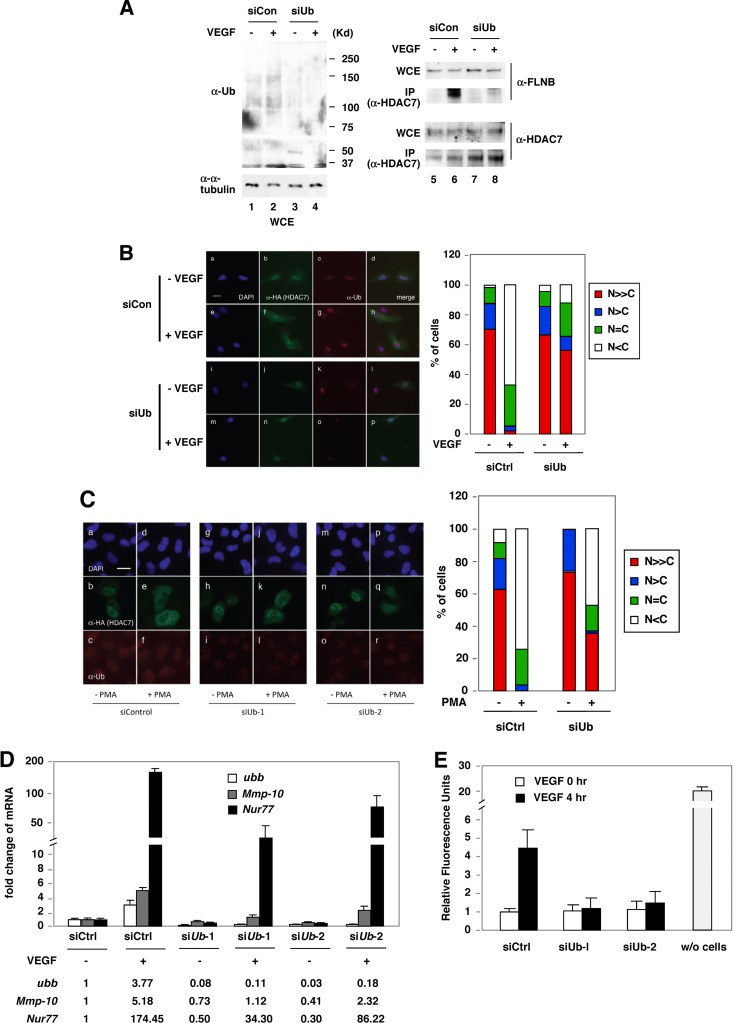Fig 6.
Depletion of Ub blocks VEGF-induced endothelial cell permeability. (A) Depletion of Ub blocks VEGF-induced HDAC7-FLNB interaction in HMVECs. HMVECs were transiently transfected with control siRNA (siCon) or siRNA against Ub (siUb) for 48 h in regular EC medium. Cells were starved with 0.1% FBS in EBM-2 medium for another 24 h and then were treated with VEGF (50 ng/ml) for 20 min. Immunoprecipitation was performed with anti-HDAC7 antibodies, followed by Western blotting. (B) Knockdown of Ub abolishes VEGF-mediated cytoplasmic accumulation of HA-HDAC7 in HUVECs. HUVECs were transiently transfected with control siRNA or siRNA against Ub as described in panel A except that cells were treated with VEGF (20 ng/ml) for 2 h, followed by fluorescence microscopy. For quantification, the numbers of HA-HDAC7-transfected cells for each set of experiments were scored as described in the legend of Fig. 2A, and the percentages of cells in different categories are shown. Scale bar, 20 μm. (C) Knockdown of Ub blocks PMA-induced cytoplasmic sequestration of HA-HDAC7 in HeLa cells. Cells were transfected with control siRNA or siRNA against Ub and then transfected with HA-HDAC7 plasmids. Cells were treated with 10 ng/ml of PMA for 2 h, followed by fluorescence microscopy. The percentages of cells in different categories were scored as described in the legend of Fig. 2A. Scale bar, 20 μm. (D) Ub is critical for VEGF-mediated induction of MEF2/HDAC7 target genes, Mmp-10 and Nur77. The experiment was performed as described in the legend of Fig. 2C except that Ub siRNAs were used. ubb, Ub gene. (E) Permeability assays were performed as described in the legend of Fig. 2G except that Ub siRNAs were used. A sample in which no cells were added (w/o cells) was used as a control for the formation of the cell monolayer.

